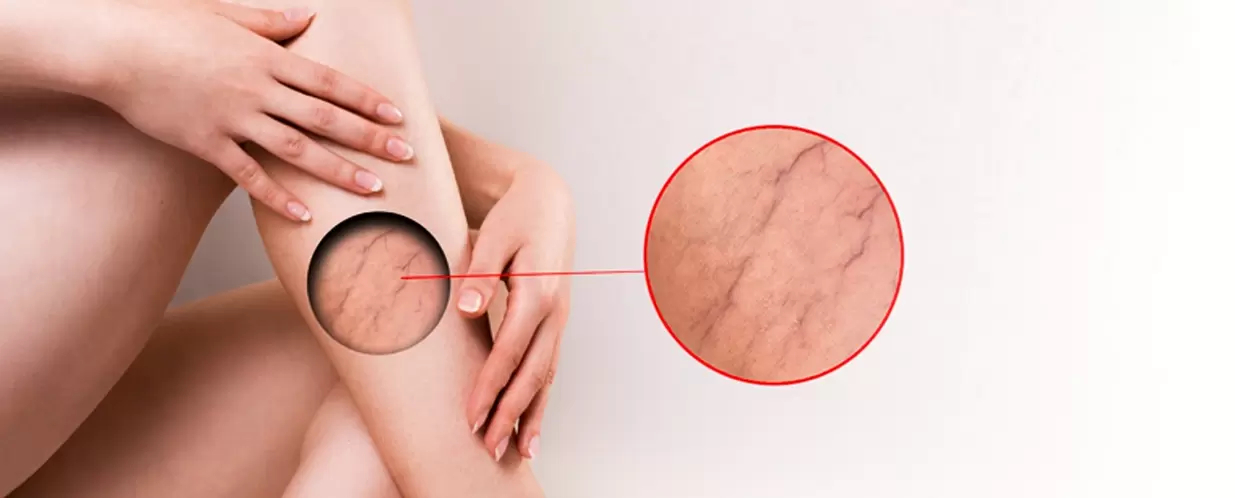
Varicose veins
- Pregnant women (varicose veins in women’s lower limbs are intermittent and return to normal after delivery);
- People engaged in heavy physical labor and lifting weights;
- People interested in strength training;
- Everyone who is overweight.
Phlebologists have a joke: "Anyone who lives will see his varicose veins, unless of course he dies of some other disease! " Cynical? But there is some truth to every joke. 90% of the world's population today suffers from this disease.
Today, lower extremity venous ultrasonography is the most informative method for diagnosing varicose veins. When should you do it? If at the end of the day your legs feel "full of lead" and visibly swollen. By the way, it is now considered the gold standard for a phlebologist to personally perform an ultrasound examination to determine the severity of the disease and decide on the further treatment strategy for the patient.
Stages of varicose veins in lower limbs
- Stage zero.There were no noticeable changes other than leg discomfort at the end of the day.
- The first stage.A single network of small veins can be seen through the skin.
- second stage.The dilation of the saphenous vein is clearly visible through the skin of the leg.
- The third phase.A feeling of heaviness in the legs is accompanied by swelling and the appearance of venous "lumps" above the surface of the skin.
- The fourth stage.In the area above the dilated deep veins, the skin begins to itch persistently, and over time, the skin turns dark brown.
- The fifth stage.An indicator of advanced disease: trophic ulcers appear where damaged veins have been scratched and take a long time to heal.
- Stage Six.Trophic ulcers no longer heal, ooze, and become continuously infected.
Varicose vein surgery
- standard phlebectomy
This is a surgical removal of fragments of damaged veins under general or spinal anesthesia. It can be performed in various ways (according to Babcock, according to Varady et al. ), the choice of which is decided by the doctor based on the severity of the lesion and the diameter of the damaged vein. In any case, modern phlebology considers this treatment method as an extreme measure, used when other methods cannot be used for various reasons. - intravenous laser coagulation
It belongs to the category of modern thermal ablation treatment methods. An electric current is applied to the affected vein, causing a blood clot to form. Over time, the clot is replaced by connective tissue and the problem vein disappears. The advantage of this method is that it is painless. The surgery is performed under local anesthesia; upon completion, the patient gets up and goes home. - radiofrequency ablation
This is another method of laser treatment for varicose veins in the lower limbs. The operating principle is similar to intravenous laser coagulation, except that in this case the role of the electrode is played by a light guide, through which the pathologically altered vein is exposed to radiofrequency radiation. This surgery is also performed using local anesthesia and has a short recovery period. - ultrasonic sclerotherapy
Today, this mechanochemical approach is considered more innovative than laser therapy because it uses chemical rather than physical agents. A sclerosing agent, a special medicinal substance that "glues" the veins together, is injected into the vein cavity. The procedure is painless for the patient and is performed in an outpatient setting. Most effective for superficial varicose veins. However, it is not included in the basic compulsory medical insurance coverage.
Ointments and gels for varicose veins
Massage and physical activity to treat varicose veins
- Cycling.
Lie on your back and imitate pedaling a bicycle. - Walk alternately.
Stand on your toes first, then your heels. - "Scissors".
While lying on your back, straighten your legs at the knees and swing them across.
The risk of varicose veins due to being overweight
consequences of varicose veins
When they ask me: "Doctor, is it possible to do nothing if you have varicose veins? ", I answer honestly: "You can live. But you are unlikely to like this life! " First of all, the veinsNutritional changes can lead to ulcers, which are bound to become infected and leak. Secondly, superficial varicose veins can lead to deep vein thrombosis in the lower extremities, which carries the risk of pulmonary embolism and, in some cases, even death.

















